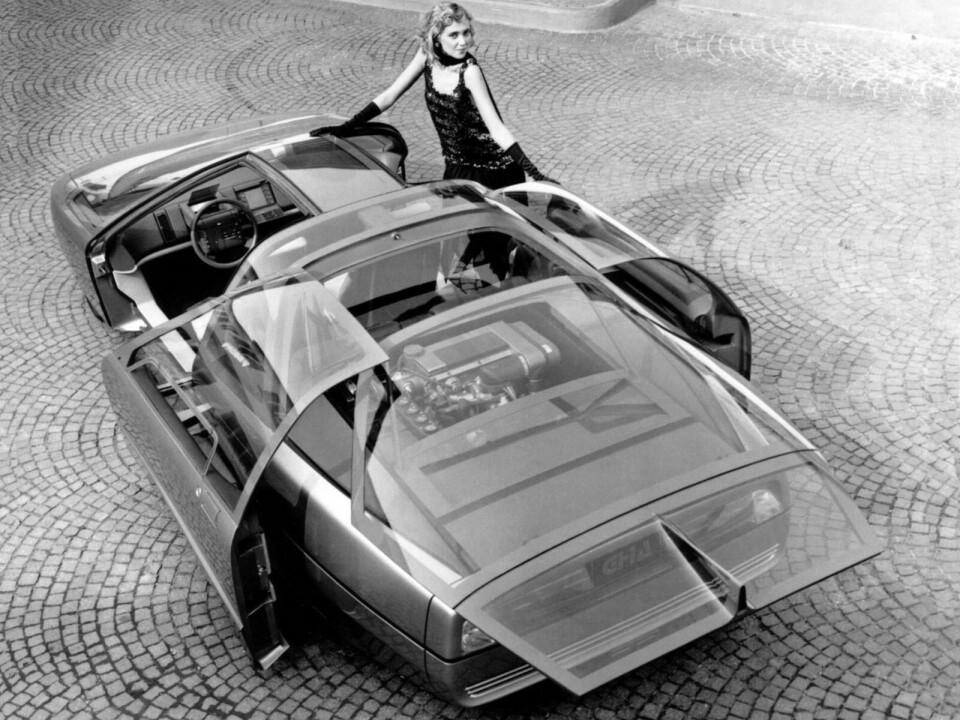
Concept Car of the Week: Ford Probe V (1985)
The Prove V was first shown at the Frankfurt Motor Show back in 1985, and was arguably one of Ford’s most radical concept cars
This week we previewed Audi’s forthcoming Q6 e-tron quattro concept that will be revealed at the 2015 Frankfurt Motor Show next month. That SUV will feature a new form language Audi calls ‘aerosthetics’ that incorporates active aerodynamic elements into the design.

The history of aerodynamics the automotive industry is a long and storied one, and this week’s concept car, the Ford Probe V is one of the better chapters. The Probe V, as its name implies, was the fifth instalment in a series of experimental concept cars Ford designed with the assistance of Ghia in the late 1970s and early 1980s. The Probe V would prove to be the last in the series and was the most radical of the group.
Designed as an attempt to maximise the aerodynamic efficiency of a four-passenger sedan, and to introduce a form language that would appear on the soon-to-be introduced production Taurus, the Probe V also had a healthy dose of eye-catching science fiction in its design.

As a concept car, it was almost perfect in its vision of an optimistic, futuristic sedan. Its sleek shape seemed almost impossibly slippery at first glance. Its wheel covers at all four wheels (the front covers turned with the wheels) made you think the car might be floating: a hovercraft for the family.
A giant glasshouse covered the passenger compartment. The doors swung out on parallelogram hinges, and then slid back to allow wide and unobstructed access for all occupants. The rear glass canopy similarly slid back to allow access to the engine placed amidships; a radical solution that allowed a sleek, lower front end.
All these aerodynamic features weren’t just for design’s sake, they were serious attempts to reduce the coefficient of drag (Cd) to an absolute minimum. And they were engineered with a major commitment to empirical wind tunnel experimentation, as the advanced computer modelling and simulation technologies we enjoy today would not become available for another decade at least. The results were superb – the Cd of the Probe V was an impressive 0.137, equivalent to that of an F-16 jet fighter.

As important as the aerodynamic achievements were, the optimistic futurism of the car might have been its greatest strength. In a way, the designed hearkened back to the American concept car glory days of the 1950s, the great Ford future turnpike cruisers, and the General Motors Motorama cars that were festooned with acres of chrome and bristling with all manner of antennas, nacelles, tailfins, and Dagmars.

But the Ford Probe V updated all this into a sleek aero-monoform, with one transparent tail fin, perhaps as a memorial to those earlier glorious times. The Probe predicted a future of aerodynamically-tuned monoform cars, efficient not just by virtue of size or engine displacement but by their wind-cheating sleekness.

And, for Ford, it was an overdue farewell to the boxy designs of the 1970s – the LTDs and Granadas that were hallmarks of the Lee Iacocca era – he and his pet design aesthetic had since moved on to Chrysler – and opened a way for a new curvaceous design sensibility, even to the traditionally mundane family sedan. It was a tremendous design gamble for Ford, but one that proved fruitful. The Taurus was a best-seller for a decade.
As for the Probe V itself, it made the requisite rounds of the auto shows, debuting at Frankfurt in 1985, and reinforced Ford’s new ‘aero-look’ design. It then faded into obscurity, resurfacing at a Christie’s auction in 2002, in rough shape. The engine wasn’t running, the paint was chipped, and the interior leather cracked and worn. Estimated to sell for between $15,000 and $25,000, bidding on the car eventually topped out at $19,975.

Proof that an optimistic and futuristic design statement, even if a bit tarnished, will always find a home. Good words to consider as we head into the waning weeks of summer, and into the busy autumn motor show season.




